mobile View, to the German Version tap the flag


- Republic of Croatia
- presidial republic
- own name: Republika Hrvatska
• Flags
• Historical and regional Flags
• Meaning/Origin of the Flag
• Coat of Arms
• Meaning/Origin of the Coat of Arms
• Aircraft Roundel
• Map
• Numbers and Facts
• History
• Map of the former crown lands of Austria-Hungary (to 1918)
• Origin of the Country's Name
• Slavonia
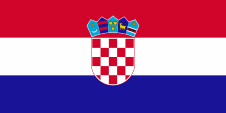
National and state flag,
ratio = 1:2,
Source, by: Flags of all Nations





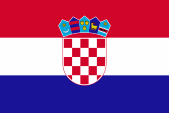
Merchant flag and state flag offshore,
ratio = 2:3,
Source, by: Flags of all Nations





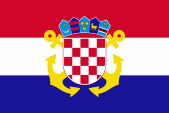
Naval flag,
ratio = 2:3,
Source, by: Wikipedia (D)



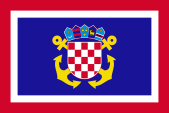
Naval jack,
ratio = 2:3,
Source, by: Wikipedia (D)




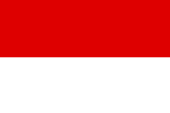
to 1849,
Flag of the Kingdom of Croatia under Habsburg rule,
Source, by: Wikipedia (EN)




to 1849,
Flag of the Kingdom of Slavonia under Habsburg rule,
Source, by: Wikipedia (EN)



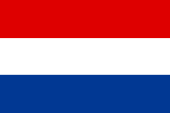
1868–1918,
Flag of the Kingdom of Croatia-Slavonia as Hungarian crown-land
Source, by: Wikipedia (EN)



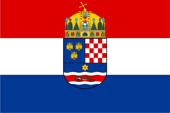
1868–1918,
Flag of the Kingdom of Croatia-Slavonia as Hungarian crown-land,
Flag with coat of arms,
Source, by: Wikipedia (EN)



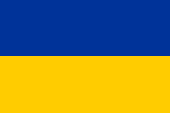
1820–1918,
Flag of the Kingdom of Dalmatia under Habsburg rule,
Source, by: Wikipedia (EN)



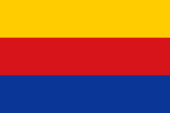
1849–1918,
Flag of the Margraviate of Istria under Habsburg rule,
the country is a part of Croatia since 1945,
more Info, click here → Istria,
Source, by: Flags of the World



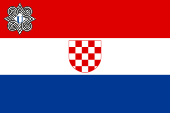
1941–1945,
State flag,
ratio = 2:3,
Source, by: Flaggenbuch 1939




1941–1945,
National flag,
ratio = 2:3,
Source, by: Flaggenbuch 1939



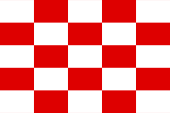
1941–1945,
Naval flag,
ratio = 2:3,
Source, by: Flaggenbuch 1939



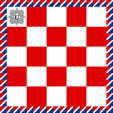
1941–1945,
Flag of the chief of state (Poglavnik),
ratio = 1:1,
Source, by: Flaggenbuch 1939



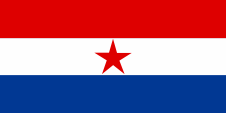
1945–1947,
Flag of the Federal State of Croatia,
ratio = 1:2,
Source, by: World Statesmen



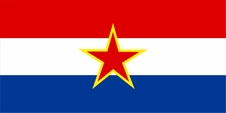
1947–1990,
Flag of Croatia in the SFR Yugoslavia,
ratio = 1:2,
Source, by: World Statesmen



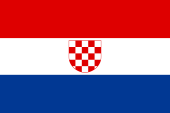
1990,
Flag of Croatia,
ratio = 2:3,
Source, by: Wikipedia (EN)



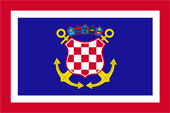
1992–1999,
Naval jack,
ratio = 2:3,
Source, by: Flags of all Nations




The today's flag of Croatia was officially introduced on the 22nd of December in 1990. It shows three horizontal stripes in red, white and blue, and in the middle the coat of arms. The chromatic colors are nowadays among others defined in Pantone PMS, as red = pt 186, light blue = cyan, blue = pt reflex blue, yellow = pt 108. However, this cannot apply to the historical flags due to the lack of standards at that time. The traditional colours of Croatia are red and white. They were derived from the Croatian blazon. After the growing of the Slavic nationalism was Croatia also engaged to create a three-colored flag in the colours red, white and blue (look underneath in the text). That was adoped officially on occasion of the Austria-Hungaryn Conciliation, because when Croatia and Slavonia became merged into the Kingdom of Croatia-Slavonia in 1868, the colours of Croatia (red and white) and Slavonia (blue and white) were combined to the colour combination of red-white-blue. Many Slavic nations create on the 19th century own flags – in context with a growing Slavic nationalism. Thereby played the Panslavism an important roll, a political movement of the 18th/19th century, which would unite all Slavs in one nation. The most Slavic nations however lived in this times under Austrian, Turkish or even German rule. The Panslavism saw in Russia a model, because the Russians were, apart from Serbia and Montenegro, the only free Slavic nation. In this way the colours of the Russian flag became to an idol of the Panslavists, and in the end to a colour's pattern in the designing of the flags of many Slavic nations. Those flags carried and carry except few exceptions the Russian colours white, blue and red as mutual attribute. From there this colour's combination is named "Panslavic Colours". After Yugoslavia was overrun and shattered by German troops in 1941, in Croatia seizures the national movement of Ustascha the power, and Croatia became an independent state. The red-white-blue flag was supplemented by the Croatian blazon and on the state and war flag was even added in the upper red stripe near the flagstaff the symbol of the Ustasha. After the seizure of power by the communists was fixed in the mittle of the flag instead of the coat of arms a five-pointed red, gold-rimmed star (symbol of the communist partisans of the Second World War and symbol of the communism). After the end of communism in Croatia they wanted to go back to their roots on 26th of June in 1990 and undo the changes in the national emblems. To do this they went back to the pre-socialist era, and that was done by reintroducing that coat of arms which was used before socialism and it was placed in the center of the flag instead of the red star. There was criticism in inland and abroad, because it would give the impression that the symbolism of Ustasha would be brought back to life. That was big nonsense, because the old Croatian coat of arms goes far back into history, namely to the 15th century. Nevertheless, the heraldic shield which was used in the period of socialism (1947-1990) was reintroduced on 21st of October in 1990. It starts at the top left not with a white field, but with red. Furthermore a crown - made of coats of arms - was added above the shield, showing five heraldic shields. These are the coat of arms of Illyria, an old and not so well known coat of arms of the city of Dubrovnik (Ragusa), the coat of arms of the Kingdom of Dalmatia, the coat of arms of Istria and the coat of arms of the Kingdom of Slavonia.
Source:
Die Welt der Flaggen,
Flaggen und Coat of arms of the Welt,
Wikipedia (EN), Volker Preuß


to 1945,
Coat of arms of Croatia,
Source: Wikipedia (EN)
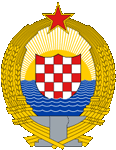
1947–1990,
Coat of arms of Croatia,
Source: Nanin7 [GFDL or CC BY-SA 3.0], from Wikimedia Commons

since 1990,
Coat of arms of Croatia,
Source: Wikipedia (EN)

The typical coat of arms of Croatia, the between white and red checkerboard styled blazon, descends from the 15th century. The image of the coat of arms goes probably back to the German Emperor Maximilian I., who was awarded the title of the King of Hungary and his minor lands in the year 1491. It is probable that Maximilian I. had in this context developed a coat of arms for the Kingdom of Croatia. After the seizure of power by the Communists, the blazon was redesigned. It starts at the top left not with a white field, but with red. The coat of arms itself was redesigned after the model of the coat of arms of the Soviet Union. After the end of communism in Croatia they wanted to go back to their roots on 26th of June in 1990 and undo the changes in the national emblems. To do this they went back to the pre-socialist era, and that was done by reintroducing that coat of arms which was used before socialism. There was criticism in inland and abroad, because it would give the impression that the symbolism of Ustasha would be brought back to life. That was big nonsense, because the old Croatian coat of arms goes far back into history, namely to the 15th century. Nevertheless, the heraldic shield which was used in the period of socialism (1947-1990) was reintroduced on 21st of October in 1990. Above the shield is since then furthermore placed a scutcheon-crown. The small shields in the scutcheon-crown symbolize diverse geographical regions of Croatia: 1.) golden six-pointed star and silvery half-moon on pale blue blazon → Zagreb (Agram) and surroundings (Illyria); 2.) blue blazon with two red bars → Dubrovnik (Ragusa); 3.) three crowned golden lion's heads in pale blue blazon → Dalmatia; 4.) golden goat buck with red horns in blue blazon → Istria; 5.) a marten in a by narrow silvery stripes from the pale blue blazon separated red field and above that a golden six-pointed star → Slavonia.
Source:
Flaggen Wappen Hymnen,
Flaggen und Coat of arms of the Welt,
Wikipedia (EN),
Volker Preuß


since 1994,
Aircraft Roundel,
Source, by: Wikipedia (EN)

1991–1994,
Aircraft Roundel,
Source, by: Wikipedia (EN)
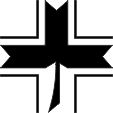
1941–1945,
Aircraft Roundel,
Source, by: Wikipedia (EN)
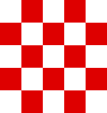
1941,
Aircraft Roundel,
Source, by: Wikipedia (EN)

Location:
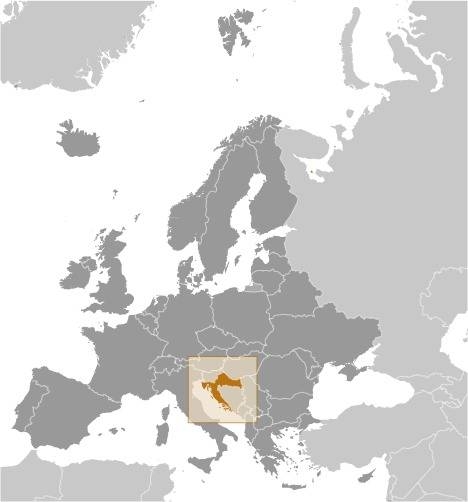
Source: CIA World Factbook
Map of the country:
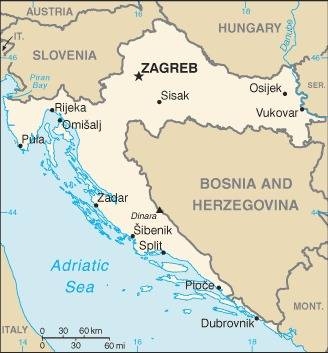
Source: CIA World Factbook
The countries of former Yugoslavia:
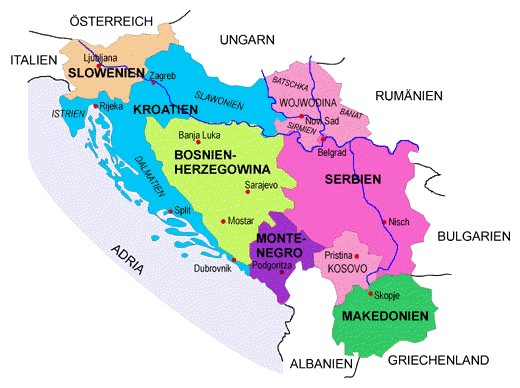
Map: Volker Preuß

Area: 21.851 square miles
Inhabitants: 3.888.529 (2021), thereof 90% Croatians, 4% Serbians, furthermore Slovenes, Hungarians, Italians, Bosniaks, Albanians
Religions: 86% Roman Catholic, 4% Serbian Othodox, 1% Muslim, 7% Non-Religious
Density of Population: 178 inh./sq.mi.
Capital: Zagreb (German: Agram), 820.678 inh. (2018)
official Language: Croatian
other Languages: Serbian, Italian, Albanian, Hungarian, German
Currency: 1 Kuna (HRK, kn) = 100 Lipa
Currency, from 1st of Jan. 2023: 1 Euro (€) = 100 Cent
Time Zone: GMT + 1 h
Source:
Wikipedia (DE)

antiquity · settlement by Illyrians
1st cent. B.C. · subjection of the Illyrian coast by Rome
to ca. 14 · subjection of whole Illyria by the Roman Empire
395 · at the partition of the Roman Empire the today's Croatia comes to the West Roman Empire
380 and 455–553 · to the Empire of the Eastern Goth
to 568 · partially to the Empire of the Langobards
7th cent. · immigration of the Croats, probably from the region of Weichsel River (today's Poland)
ca. 900 · the today's Croatia comes to the East Roman Empire (Byzantium)
924 · foundation of the Kingdom of Croatia by Tomislav
1091/1102 · Croatia comes to Hungary
1526 · battle near Mohács, Hungary succumbs the Ottoman Empire, Austria secures big parts of Croatia and acquires the Hungarian crown, the largest part of Hungary becomes incorporated into the Ottoman Empire
1527 · the House of Habsburg is recognized as ruling dynasty (Kings) of Croatia
1699 · Peace of Karlovitz, the Habsburgs as Kings of Hungary purchase whole Croatia and Slavonia, Slavonia becomes also a kingdom
1797–1809 · French Revolutionar Wars, parts of Austria (Styria) become occupied by the French in 1797
12th of May 1797 · Peace of Campo Formio between Austria (House of Habsburg) and France (Napoléon I.), Dalmatia comes from Venice to the House of Habsburg
1809 · Peace of Vienna, Austria loses Salzburg, the Inn Quarter, Western Galicia and parts of Eastern Galicia and cedes Istria, Trieste, Gorizia, Carniola, Carinthia, Croatia, and Dalmatia to France, which were merged in 1810 to the French "Illyrian Provinces"
1813 · Austria declares war on France (Napoléon)
1814/1815 · Congress of Vienna, realignment of Europe after the era Napoléon, the Empire of Austria (House of Habsburg) acquires back the in 1809 lost territories; Istria, Trieste, Gorizia, Carinthia and Carniola become merged to the Habsburg's Kingdom of Illyria, Dalmatia and Croatia become re-annexed to Hungary (under the Habsburgs, part of the Empire of Austria)
1848/1849 · revolution in Vienna, civil war between Hungarians and Croats, riotings in Prague, Mailand and Venice, as a result of that Emperor Ferdinand I. resigns and Franz Joseph I. of Habsburg becomes new Emperor, the riotings become suppressed and he enacts a new constitution: the titular hereditary territories of the Habsburgs in the Austrian Empire become converted to crown lands with their own Landtag (parliament), the Landtag of Dalmatia rejects the annexion to Croatia, the Kingdom of Dalmatia becomes an own crown land of the Austrian crown, Croatia and Slavonia become united by inclusion of the coastal regions and the City of Fiume to the "Kingdom of Croatia and Slavonia", which remains as a subsidiary country under the Hungarian crown, dissolution of the Kingdom of Illyria: division in the crown lands of Carniola, Carinthia, Littoral, Croatia and Slavonia and Dalmatia
8th of February in 1867 · Austro-Hungarian Compromise, equal rights for both parts of the empire, nascence of the double monarchy of Austria-Hungary, Austria: consisting of the Austrian crown lands, Hungary: consisting of Hungary itself and its subsidiary countries, the House of Habsburg sets in one person the Emperor of Austria and the King of Hungary, establishment of common ministries in foreign affairs, finance and defense
1868 · Hungarian-Croatian Compromise, Croatia and Slavonia remain together as the Kingdom of "Croatia-Slavonia" under the Hungarian crown, Fiume becomes a free city (quasi crown land) within Hungary
1918 · end of the First World War, breakdown of the imperial-royal monarchy, disintegration of Austro-Hungary into national states, unification of Croatia/Slavonia with Slovenia and Serbia to the "Kingdom of the Serbs, Croats and Slovenes" (since 1929 named Yugoslavia), King becomes the King of Serbia
1941 · Yugoslavia gets dissolved during the Second World War, Croatia becomes an independent state under Ante Pavelic, the Leader of the Croatian national movement (Ustasha), Croatia becomes incorporated Bosnia-Hercegovina and joines in the Second World War on 15th of June in 1941 on the side of the Axis Mights (Germany, Italy, Japan)
1941–1946 · Yugoslavia is during the Second World War location of a merciless partisan and civil war between communists (under J.B.Tito), republicans, monarchists and nationalists, the communists prevailed
9th of May in 1944 · proclamation of the Federal State of Croatia
29th of November in 1945 · proclamation of the "Federative People's Republic of Yugoslavia" by Tito
31st of January in 1946 · proclamation of the People's Republic of Croatia (within communist Yugoslavia)
9th of June in 1963 · proclamation of the Socialist Republic of Croatia (within communist Yugoslavia)
25th of July in 1990 · proclamation of the Republic of Croatia
25th of June 1991 · the Croatian parliament declares the independence of the country, war against the by Serbia dominated Yugoslavia, Serbian-Yugoslav troops occupy a third of the country (Western Slavonia and Krajina)
1991–1992 · whole Yugoslavia dissolves into its particular states
1992 · deploy of UNO peace troops
1995 · Croatian offensive, they succeed to liberate the most occupied territories
21st of November in 1995 · Peace Treaty of Dayton
1998 · re-incorporation of Eastern Slavonia
1st of July in 2013 · Croatia is a member of the European Union
Source:
Atlas zur Geschichte,
Wikipedia (D),
World Statesmen

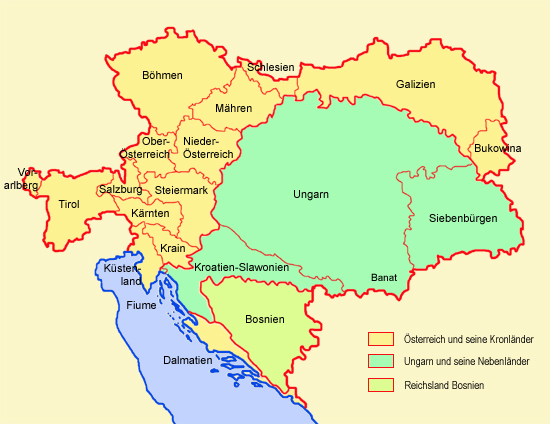
Map: Volker Preuß

The name "Croatia" comes naturally from the people of the "Croats", which name themselves "Hrvati". The word "Hrvati" is from Indo-German origin and is near related with the Olt Iranian word "Fshuhaurvata", what means "herdsman".
Source: Handbuch der geographischen Namen

- Kingdom of Slavonia, founded in 16th century
- from 1699 to the Dynasty of Habsburg
- 1868 merged with Croatia

to 1849,
Flag of the Kingdom of Slavonia under Habsburg rule,
Source, by: Wikipedia (EN)



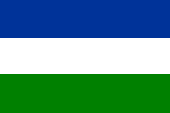
1868–1918,
Colours of Slavonia as a part of the Kingdom of Croatia-Slavonia,
Source, by: Flags of the World




1699–1849,
Coat of arms of the Kingdom of Slavonia under Habsburg rule,
Source, by: Wikipedia (DE)
Initially, the entire area between the rivers Save and Drava was called Slavonia with the Latin name, which dates back to the settlement by Slavic tribes in the 7th century. Since the 12th century, the region has belonged to Hungary and since the 16th century, the Hungarian king has also called himself King of Slavonia. Even in the 16th century, Slavonia was conquered by the Ottoman Empire, except for the region around Agram (Zagreb), which was also called Illyria (Old Croatia, Croatia). The name Slavonia was then used only for the Ottoman part in the east of the country. In 1699, Slavonia was conquered by Austria and annexed as a kingdom. In the course of the Austria-Hungaryn compensation of 1867, the country came to the Hungarian crown and was united with Croatia in 1868 to form the Kingdom of Croatian Slavonia.
Position of Slavonia in today's Croatia:

Landkarte, Source / Map Source:
Tomobe03 [CC BY-SA 3.0], from Wikimedia Commons


![]()














































